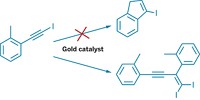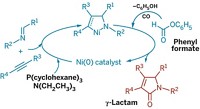Advertisement
Grab your lab coat. Let's get started
Welcome!
Welcome!
Create an account below to get 6 C&EN articles per month, receive newsletters and more - all free.
It seems this is your first time logging in online. Please enter the following information to continue.
As an ACS member you automatically get access to this site. All we need is few more details to create your reading experience.
Not you? Sign in with a different account.
Not you? Sign in with a different account.
ERROR 1
ERROR 1
ERROR 2
ERROR 2
ERROR 2
ERROR 2
ERROR 2
Password and Confirm password must match.
If you have an ACS member number, please enter it here so we can link this account to your membership. (optional)
ERROR 2
ACS values your privacy. By submitting your information, you are gaining access to C&EN and subscribing to our weekly newsletter. We use the information you provide to make your reading experience better, and we will never sell your data to third party members.
Synthesis
Hafnocene Puts N2 And CO2 To Work
January 15, 2007
| A version of this story appeared in
Volume 85, Issue 3
If chemists could take N2 and CO2 out of the air and convert them into value-added chemicals, they would really have something. Wesley H. Bernskoetter, Emil Lobkovsky, and Paul J. Chirik of Cornell University have opened a door to that possibility by preparing a substituted hydrazine from N2 and CO2 in a reaction mediated by hafnocene, a hafnium bis(cyclopentadienyl) complex (Angew. Chem. Int. Ed., DOI: 10.1002/anie.200604099). Chirik's group has previously shown that hafnocene and zirconocene can preferentially bind N2 side-on (rather than end-on) between two of the metallocene molecules, an orientation that sets up N2 for further reaction (Dalton Trans. 2007, 16). For hafnocene, they now report that reacting the hafnocene-N2 complex with CO2 leads to insertion of CO2 into the Hf-N bonds (shown). Addition of Me3SiI (Me = methyl) liberates the N2-CO2 core by forming the substituted dicarboxyl hydrazine (Me3Si)2N-N(CO2SiMe3)2 mixed with iodinated hafnocene, which can be recycled.






Join the conversation
Contact the reporter
Submit a Letter to the Editor for publication
Engage with us on Twitter